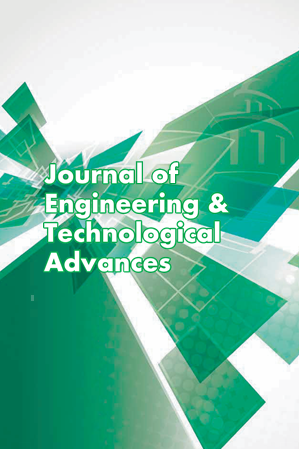Abstract
The absence of existing standards for product recovery planning and the associated difficulty in prioritising the conflicting design requirements are among the main challenges faced during product design. In this paper, a concept for the Design for Multiple Life-Cycles (DFMLC) is proposed to address this situation. The objective of the DFMLC model is to assist designers in evaluating design attributes of Multiple Life-Cycle Products (MLCP) at the early design stage. The methodology adopted for the evaluation of MLCP design strategies has been based on a modified Analytical Hierarchy Process (AHP). Two mapping matrices of the design guidelines and design strategies concerning MLCP design attributes were developed for the modified AHP model. Disassemblability (> 21 %) was found to be the most important design element for MLCP followed by serviceability (> 20 %) and reassembly (> 12 %).
References
Abdullah, T., Wahab, D. & Lashlem, A. (2013). An overview use of analytic hierarchy process (AHP) in design for remanufacturing activities. Proceedings of the International Symposium on the Analytic Hierarchy Process, 1-14.
Alamerew, Y.A. & Brissaud, D. (2017). Evaluation of remanufacturing for product recovery: Multi-criteria decision tool for end-of-life selection strategy. 3rd International Conference on Remanufacturing.
Aziz, N.A., Wahab, D.A. & Ramli, R. (2017). Establishment of engineering metrics for upgradable design of brake caliper. In. Campana, G., Howlett, R.J., Setchi, R. & Cimtti, B. Sustainable Design and Manufacturing (ed.) 68, Italy: Springer Science and Business Media Deutschland GmbH, 87-97.
Brunelli, M. (2015). Priority vektor and consistency. In Introduction to the Analytic Hierarchy Process. SpringerBriefs in Operations Research, 17-27.
Cheung, W.M., Marsh, R., Griffin, P.W., Newnes, L.B., Mileham, A.R. & Lanham, J,D. (2015). Towards cleaner production: A roadmap for predicting product end-of-life costs at early design concept. Journal of Cleaner Production, 87, 431–441.
Dunmade, I. (2013). Design for multi-lifecycle: A sustainability design concept. International Journal of Engineering Research and Applications, 3(2), 1413-1418.
Favi, C., Germani, M. & Mandolini, M. (2016). Design for Manufacturing and Assembly vs. Design to Cost: Toward a multi-objective approach for decision-making strategies during conceptual design of complex products. Procedia CIRP, 50, 275–280.
Joshi, A.D. & Gupta, S.M. (2017). Evaluation of design alternatives of end-of-life products under stochastic yields in multiple periods. American Journal of Computer Science and Information Engineering, 4(5), 52-64.
Germani, M., Mandolini, M., Marconi, M. & Rossi, M. (2014). An approach to analytically evaluate the product disassemblability during the design process. Procedia CIRP, 21, 336-341.
Go, T.F., Wahab, D.A. & Hishamuddin, H. (2015). Multiple generation life-cycles for product sustainability: The way forward. Journal of Cleaner Production, 95, 16-29.
Guan, X., Wang, Y. & Tao, L. (2009). Machining scheme selection of digital manufacturing based on genetic algorithm and AHP. Journal of Intelligent Manufacturing, 20(6), 661-669.
Gupta, S., Dangayach, G.S., Singh, A.K. & Rao, P.N. (2015). Analytic hierarchy process (AHP) model for evaluating sustainable manufacturing practices in Indian electrical panel industries. Procedia - Social and Behavioural Sciences, 189, 208-216.
Koczkodaj, W.W., Mikhailov, L., Redlarski, G., Soltys, M., Szybowski, J., Tamazian, G., Wajch, E. & Yuen, K.K.F. (2016). Important facts and observations about pairwise comparison. Fundamenta Informaticae, 144(3-4), 291-307.
Kurilova-Palisaitiene, J., Lindkvist, L. & Sundin, E. (2015). Towards facilitating circular product life-cycle information flow via remanufacturing. Procedia CIRP, 29, 780-785.
Kurilova-Palisaitiene, J. & Sundin, E. (2015). Toward pull remanufacturing: A case study on material and information flow uncertainties at a German engine remanufacturer. Procedia CIRP, 26, 270-275.
Liu, H.C., You, J.X., Shan, M.M. & Shao, L.N. (2015). Failure mode and effects analysis using intuitionistic fuzzy hybrid TOPSIS approach. Soft Computing, 19(4), 1085-1098.
Mai, 2014. Malaysia Automotive Roadmap 2014 – Highlight. Retrieved from http://muvata.org.my/uploads/3/1/7/5/31759905/a9rb701.pdf
Mastura, M.T., Sapuan, S.M. & Mansor, M.R. (2015). A framework for prioritizing customer requirements in product design: Incorporation of FAHP with AHP. Journal of Mechanical Engineering and Sciences, 9, 1655-1670.
Matsumoto, M., Yang, S., Martinsen, K. & Kainuma, Y. (2016). Trends and research challenges in remanufacturing. International Journal of Precision Engineering and Manufacturing - Green Technology, 3(1), 129-142.
Miti, 2020. National Automotive Policy 2020. Retried from https://www.miti.gov.my/index.php/pages/view/nap2020
Nahm, Y.E., Ishikawa, H. & Inoue, M. (2013). New rating methods to prioritize customer requirements in QFD with incomplete customer preferences. International Journal of Advanced Manufacturing Technology, 65, 1587-1604.
Priyono, A., Ijomah, W.L. & Bititci, U.S. (2015). Strategic operations framework for disassembly in remanufacturing. Journal of Remanufacturing, 5(11).
Sassanelli, C., Pezzotta, G., Pirola, F., Terzi, S. & Rossi, M. (2016). Design for product service supportability (DfPSS) approach: A State of the art to foster product service system (PSS) design. Procedia CIRP, 47, 192-197.
Seperamaniam, T., Jalil, N.A.A. & Zulkefli, Z.A. (2017). Hydrostatic bearing design selection for automotive application using pugh controlled convergence method. Procedia Engineering, 170, 422-429.
Sundin, E. (2004). Product and Process Design for Successful Remanufacturing. Doctoral thesis, Department of Management and Engineering, Assembly technology. Sweden: Linköpings Universitet.
Vongbunyong, S. & Chen, W.H. (2015). Disassembly Automation, Sustainable Production, Life Engineering and Management. Switzerland: Springer.
Wadhwa, S., Madaan, J. & Chan, F.T.S. (2009). Flexible decision modeling of reverse logistics system: A value adding MCDM approach for alternative selection. Robotics and Computer-Integrated Manufacturing, 25(2), 460-469.
Yang, S.S., Ngiam, H.Y., Ong, S.K. & Nee, A.Y.C. (2015). The impact of automotive product remanufacturing on environmental performance. Procedia CIRP, 29, 774-779.
Yüksel, H. (2010). Design of automobile engines for remanufacture with quality function deployment. International Journal of Sustainable Engineering, 3(3), 170-180.
Zha, X.F., Sriram, R.D. & Lu, W.F. (2004). Evaluation and selection in product design for mass customization: A knowledge decision support approach. Artificial Intelligence for Engineering Design, Analysis and Manufacturing, 18, 87–109.

This work is licensed under a Creative Commons Attribution-NonCommercial-NoDerivatives 4.0 International License.
Copyright (c) 2021 Array

